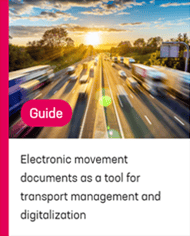The circular economy sector is growing rapidly, which puts pressure on the operators in the sector to develop and increase the efficiency of their operations. The electronic movement document is the first step towards a more efficient material flow management and transport tracking.
The electronic movement document enables real-time monitoring of material flows and agile reporting for many different uses, optimally with just a few clicks. Real-time and easily accessible information streamlines business, intensifies collaboration across the supply chain, and minimizes errors along the way.
In this guide, we explain in more detail the possibilities and benefits of electronic movement documents, and open up the implications of the new Waste Act for the processing of movement documents. The purpose of this guide is to help you identify the ways in which electronic movement documents will help you respond to the tightening legislation in the circular economy while also streamlining your business.
In the guide, we answer e.g. the following questions:
- How does Finland's new Waste Act affect the handling of movement documents?
- How does the electronic movement document ease the work of transport businesses and drivers?
- What kind of benefits does the electronic movement document bring to reporting?
- Why is it profitable to introduce the electronic movement document and what kind of features does it have?

Download the guide by filling out the form. The guide is free of charge and downloading does not bind you to anything.
See also:
Blog: The electronic movement document meets the requirements of the new Waste Act
Blog: Electronic movement documents enhance transport management and reporting
Pinja's electronic movement document service